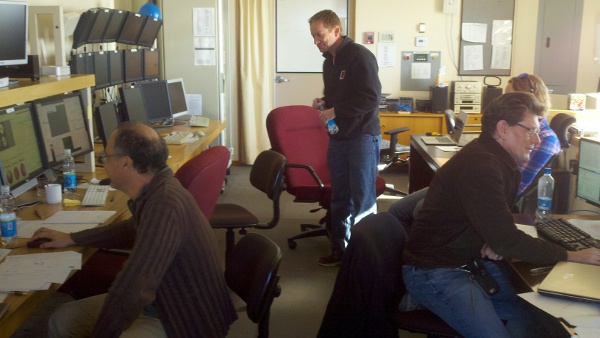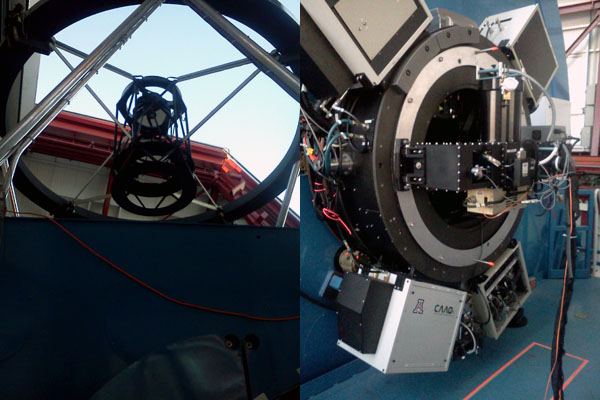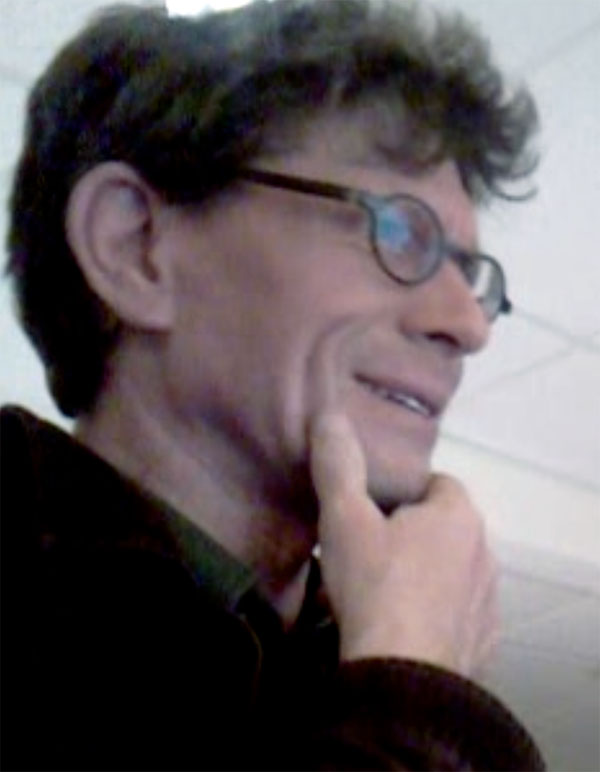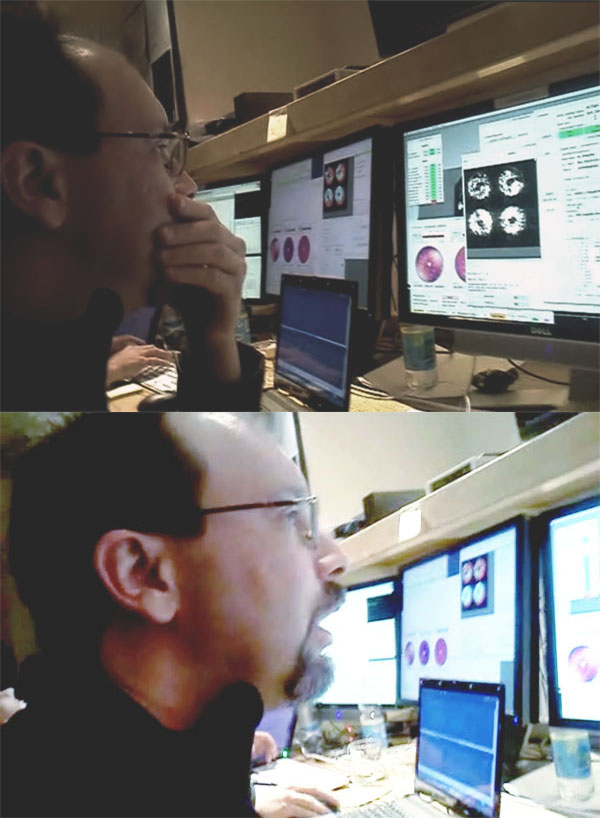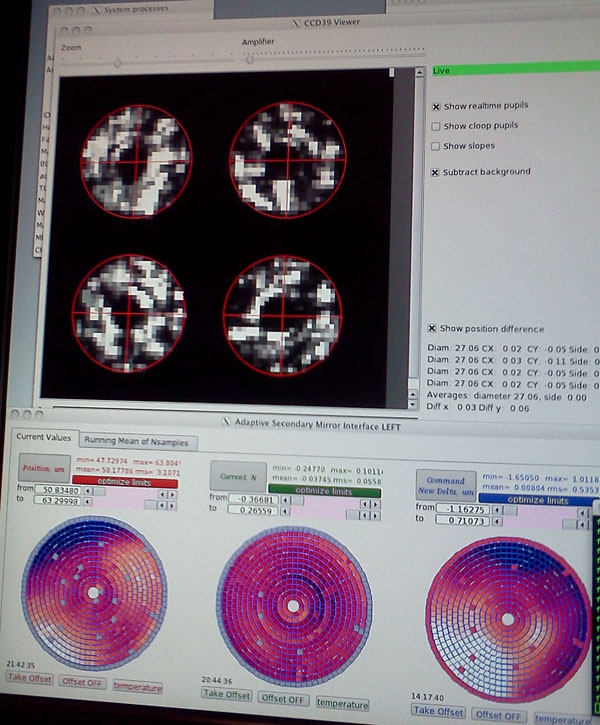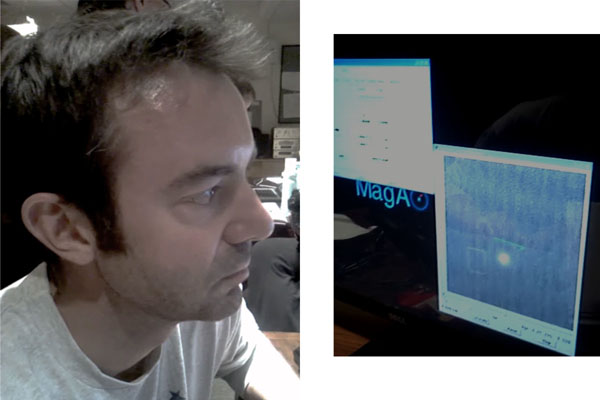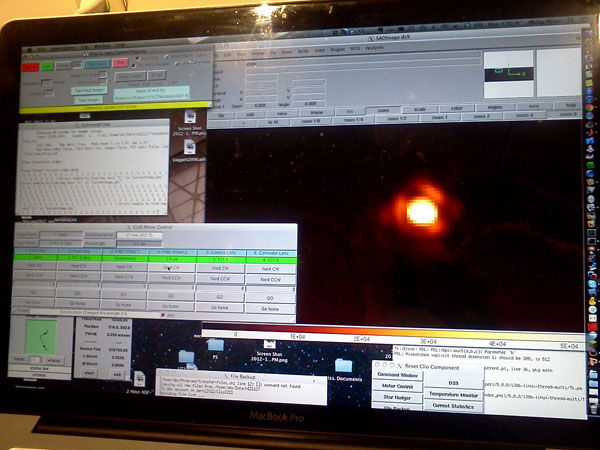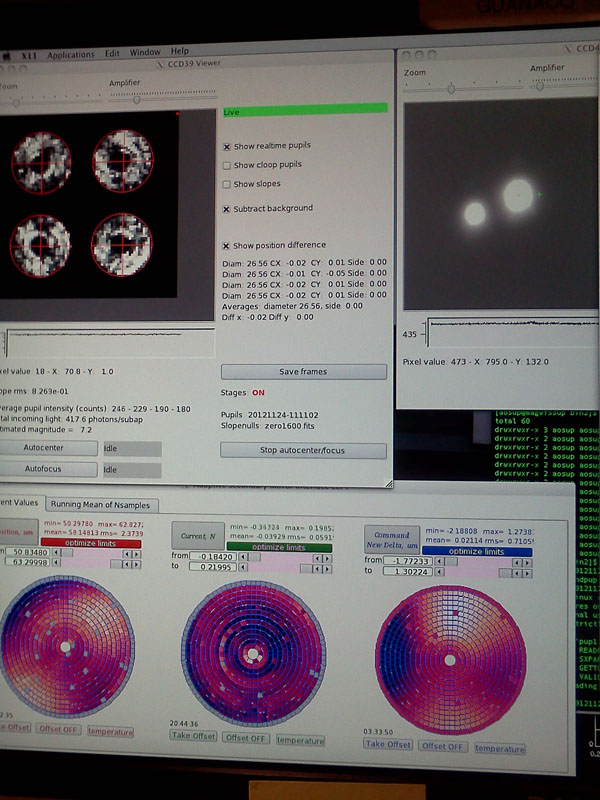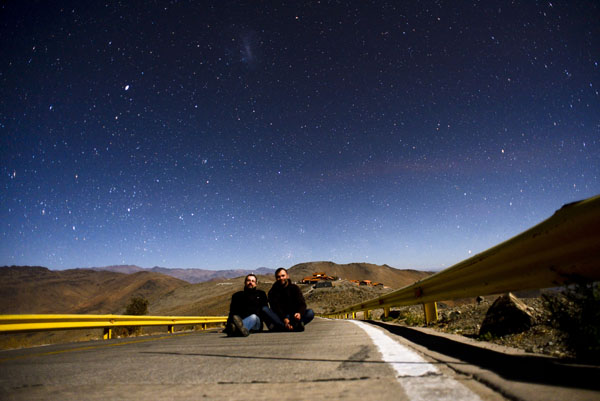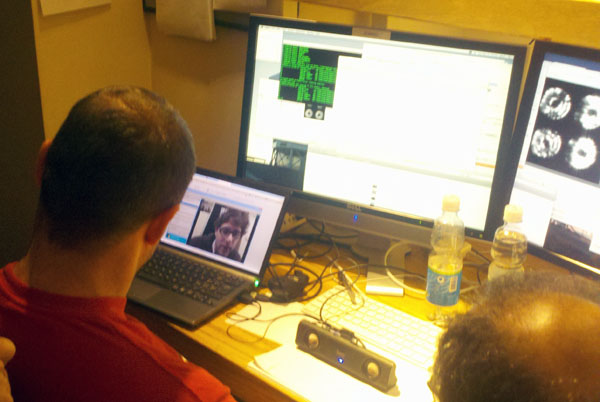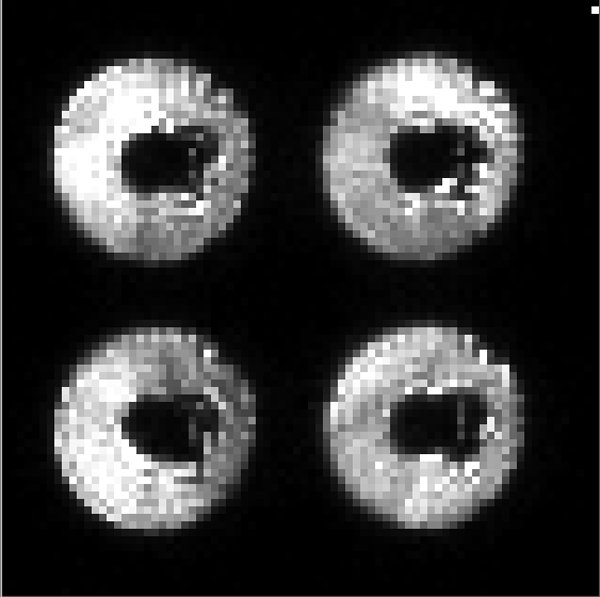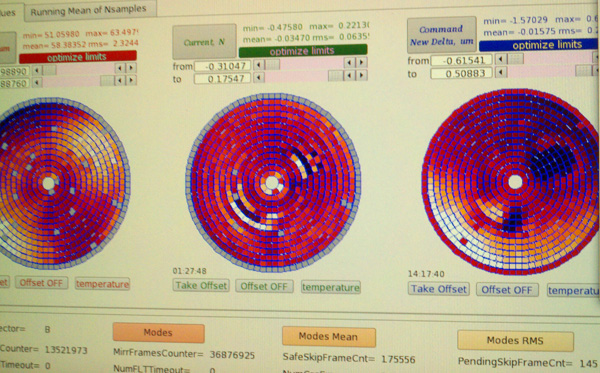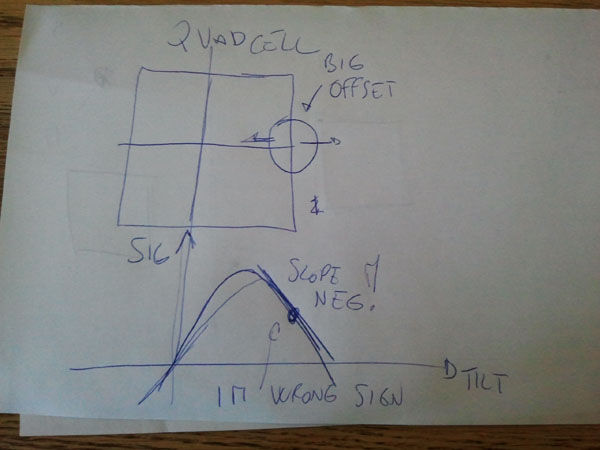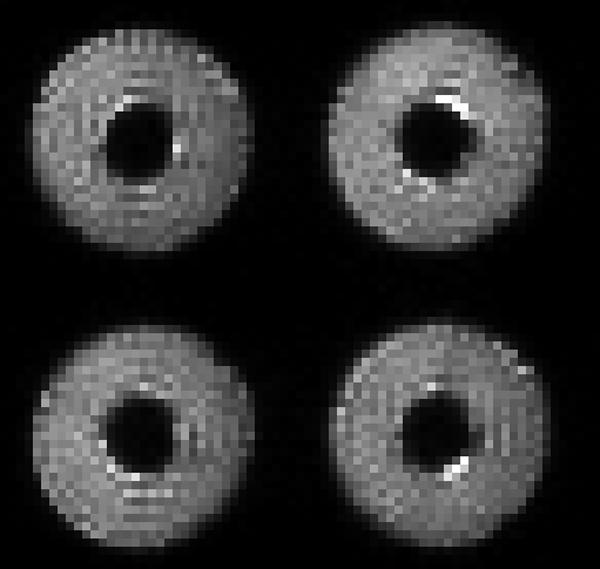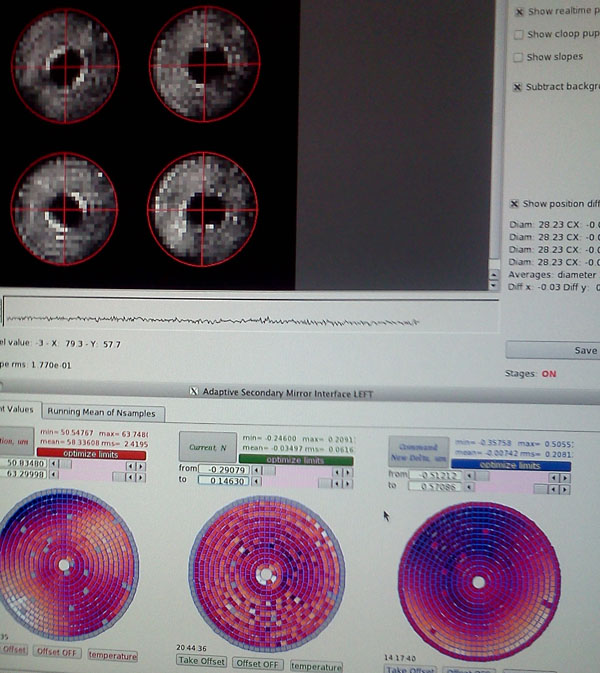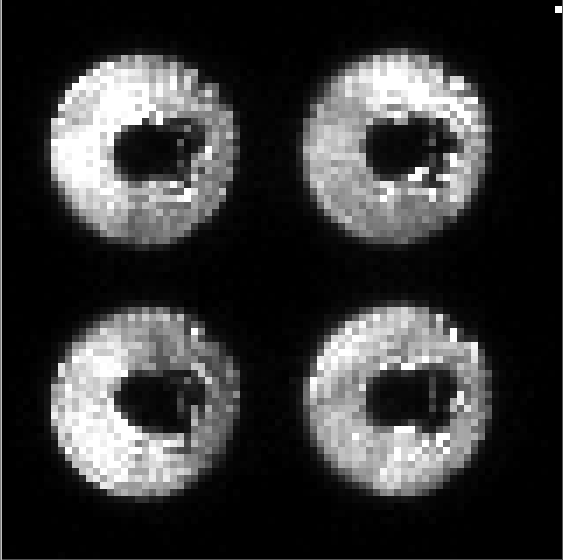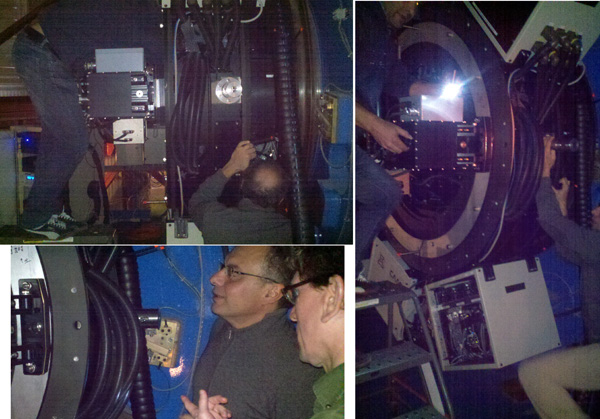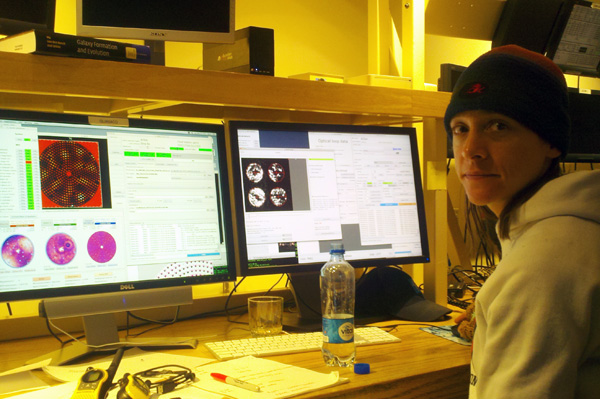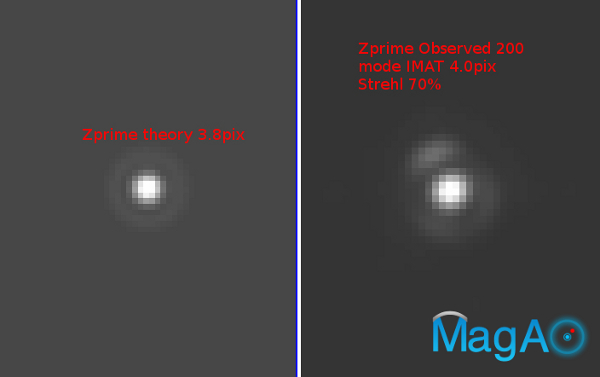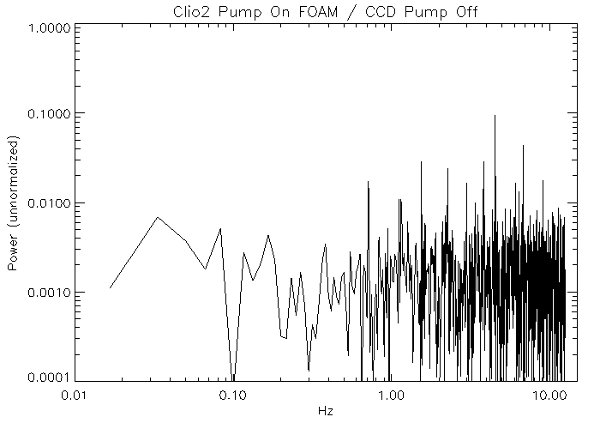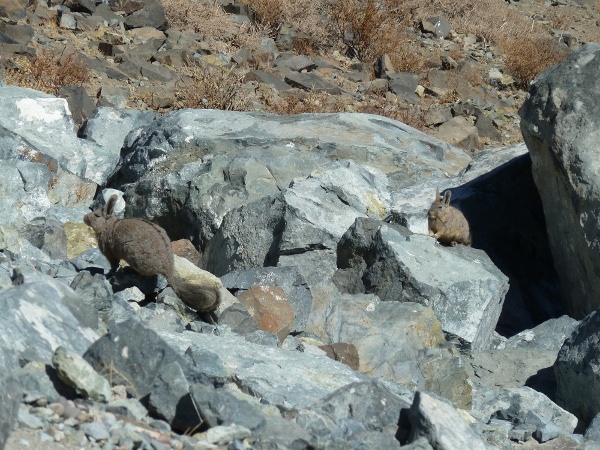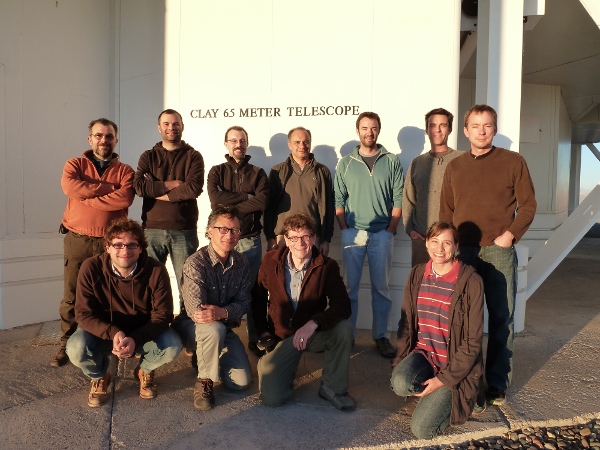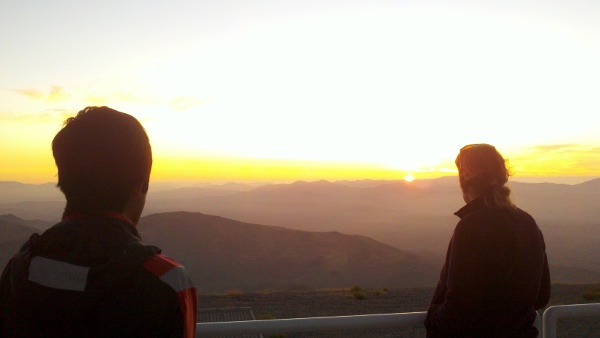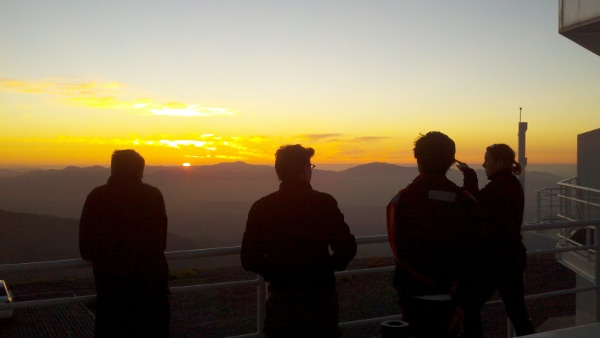Greetings MagAO blog followers! Tonight, I’m giving Jared and Katie a well-deserved night off from the blogosphere. Don’t worry – they’re still hard at work on the system, and continuing to collect pithy quotes and hilarious anecdotes for your entertainment.
I’ll start with a recap of yesterday, since I neglected to send the “good pictures” to Jared before he posted the blog entry. As you may recall, we had the first real starlight pass through our system last night! Here are a couple of pictures of the action.

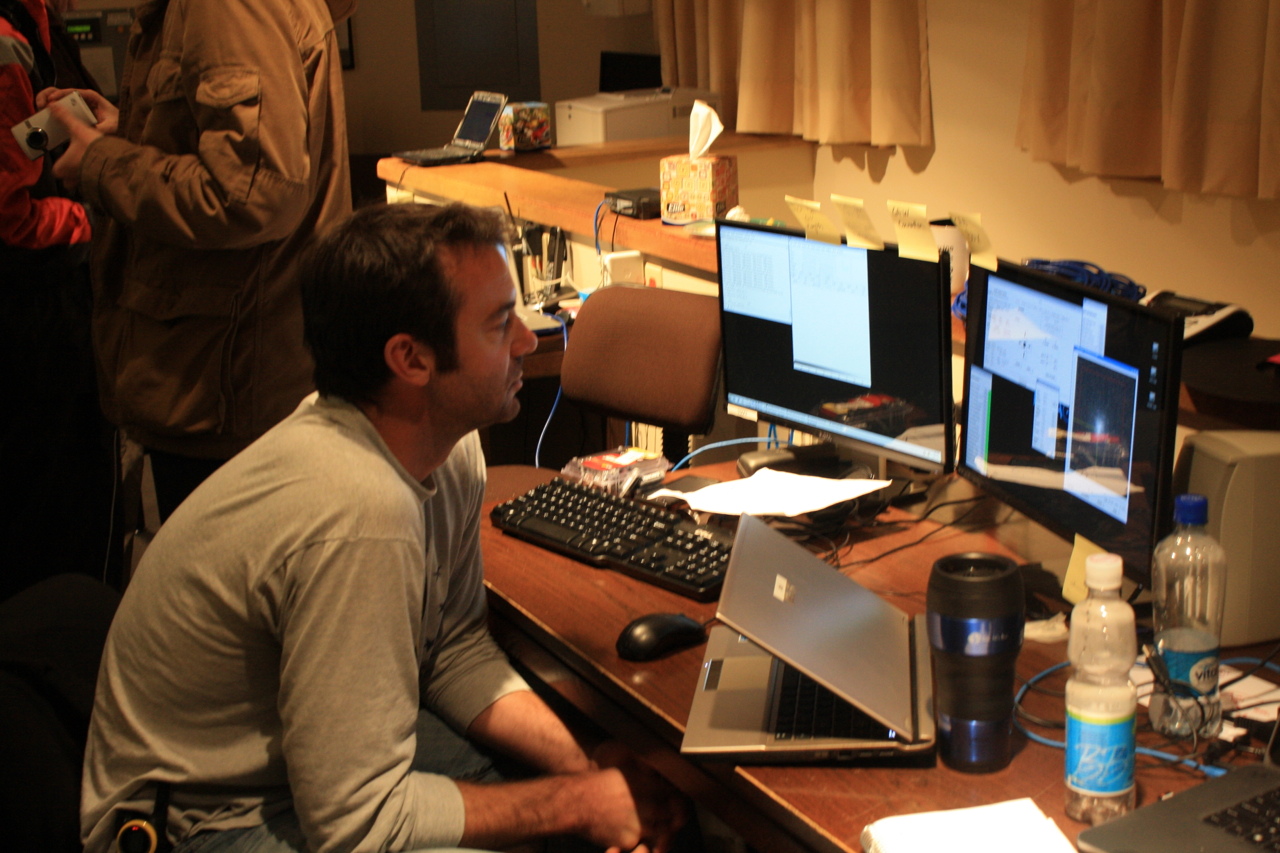
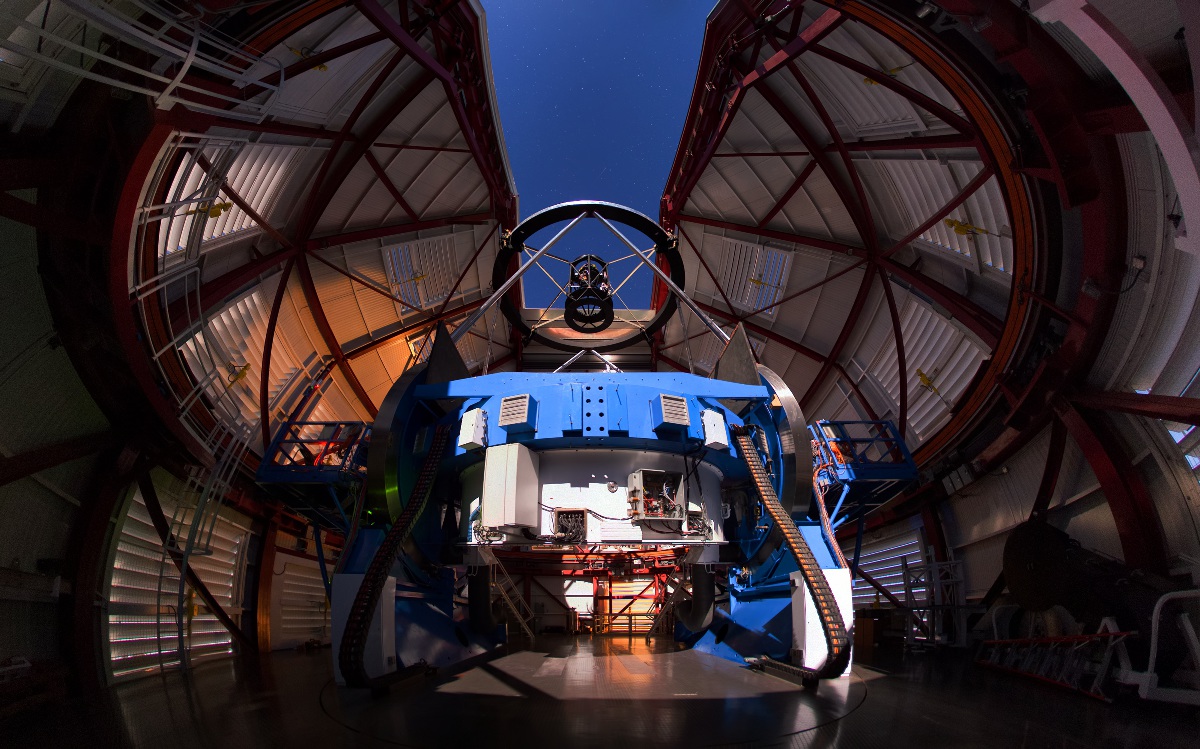
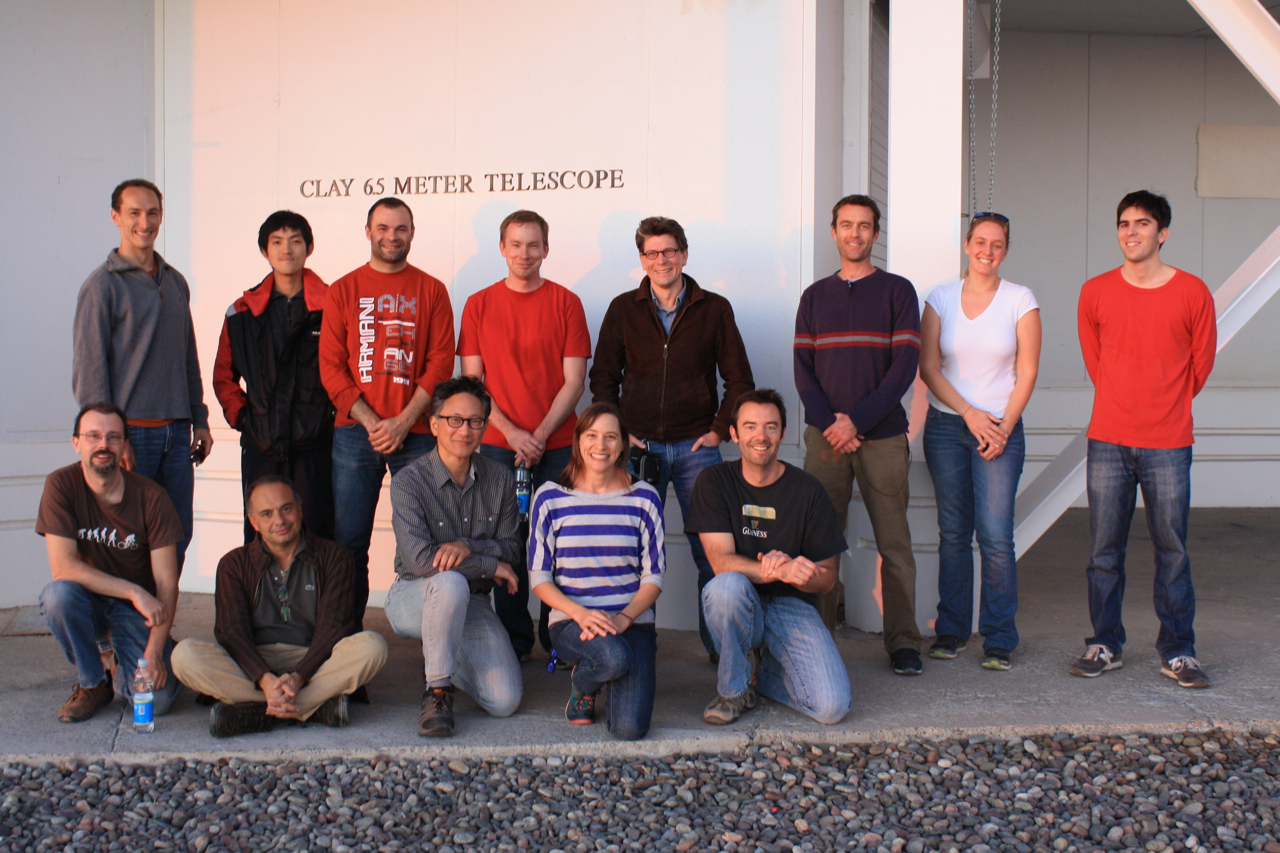
After we successfully closed the loop on-sky and the day crew left for some much needed rest, the night crew continued to push the system. As we ramped up to 50 modes, we were thwarted repeatedly by a ring of actuators where very high forces were building up and breaking our control loop. While we were mulling on that, we managed to do some important science calibrations. Specifically, we figured out which way was up. No really.
With all of the rotations and reflections of a complex optical system, “up” is non-trivial, so you have to do some testing to figure out how north, south, east and west on the sky map to your camera output. We also figured out the “plate scale” of our instruments, which just means that we looked at a binary star system of known separation and calculated how big each pixel on our detectors is when it’s mapped onto the sky. We will have to do this more precisely in a few days, but were relieved to get the answer we were expecting. No unit conversion errors here!
Before going to bed, we also took some on-sky science data for the science team to practice with. More on this later.
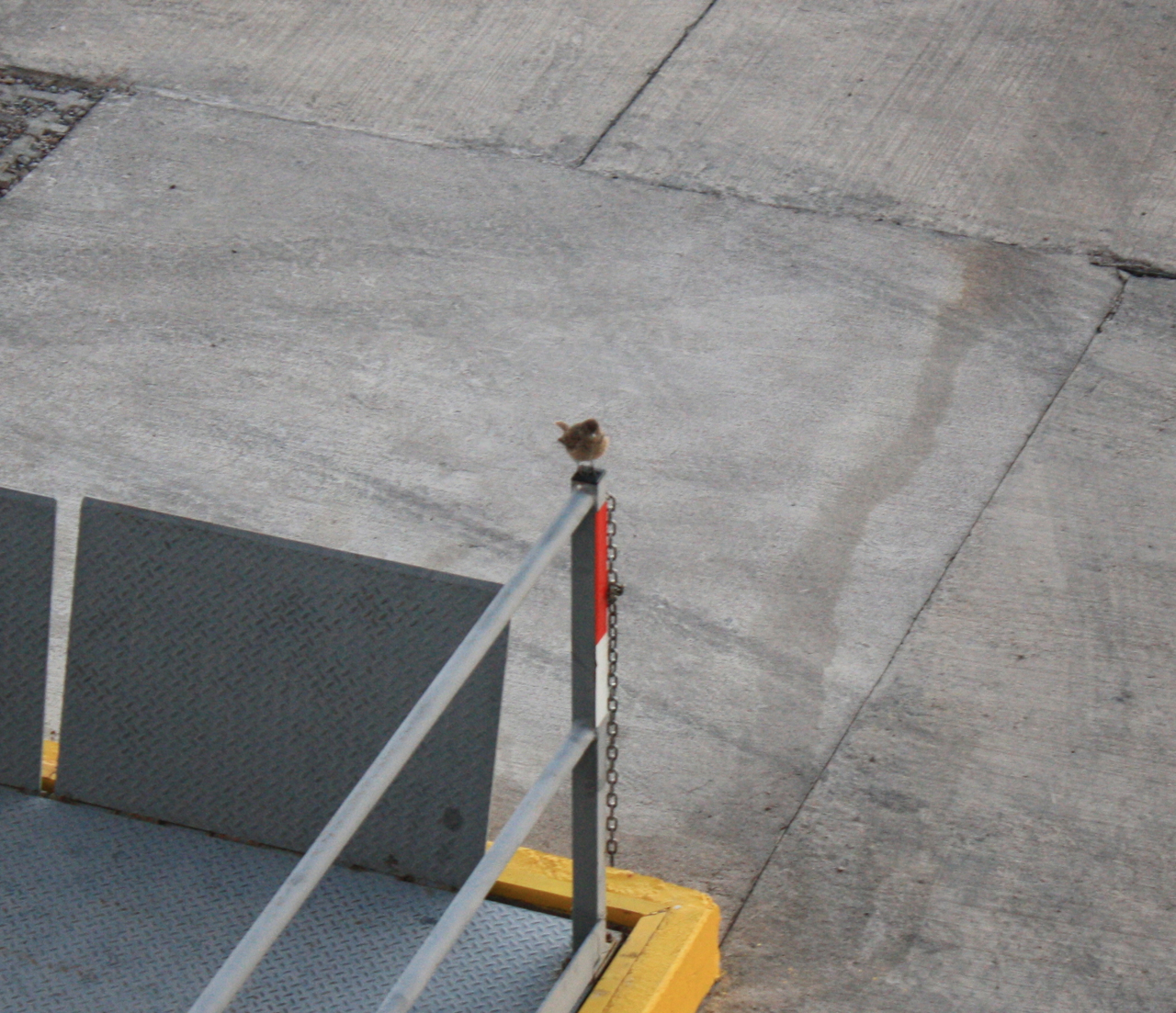
Today the day crew put the CRO back on the telescope to continue their calibration work. They quickly discovered that our actuator ring problem was due to the method used to “slave” the inner rings of unilluminated actuators. Now the system is running well at 400 modes without breaking, and the Italians have gone to bed to rest their brains in preparation for a ramp up to more modes tomorrow. The night crew is hard at work continuing their calibrations.
It’s not a MagAO blog post without a wildlife reference, so I should mention that on my hike up the mountain to the telescope this afternoon, I encountered Vizzy and a friend hanging out under the eaves of the ASB roof. Now, when I first came to Chile as an undergrad 10 years ago, I was told of these mythical creatures known as “vischachas” that were part kangaroo, part bunny, part squirrel. Memories of my dad having me look for jackelopes on ski lifts when I was a kid left me (appropriately) skeptical, so I was surprised to come face-to-face with two real live vischachas today. I watched them for several minutes to make sure that they were not stuffed and part of an elaborate prank. I have yet to see them hop like a kangaroo, so stay tuned for future investigations into the vischacha phenomenon. In the meantime, I hope that the following picture is more convincing than your typical sighting of Nessy or Big Foot.
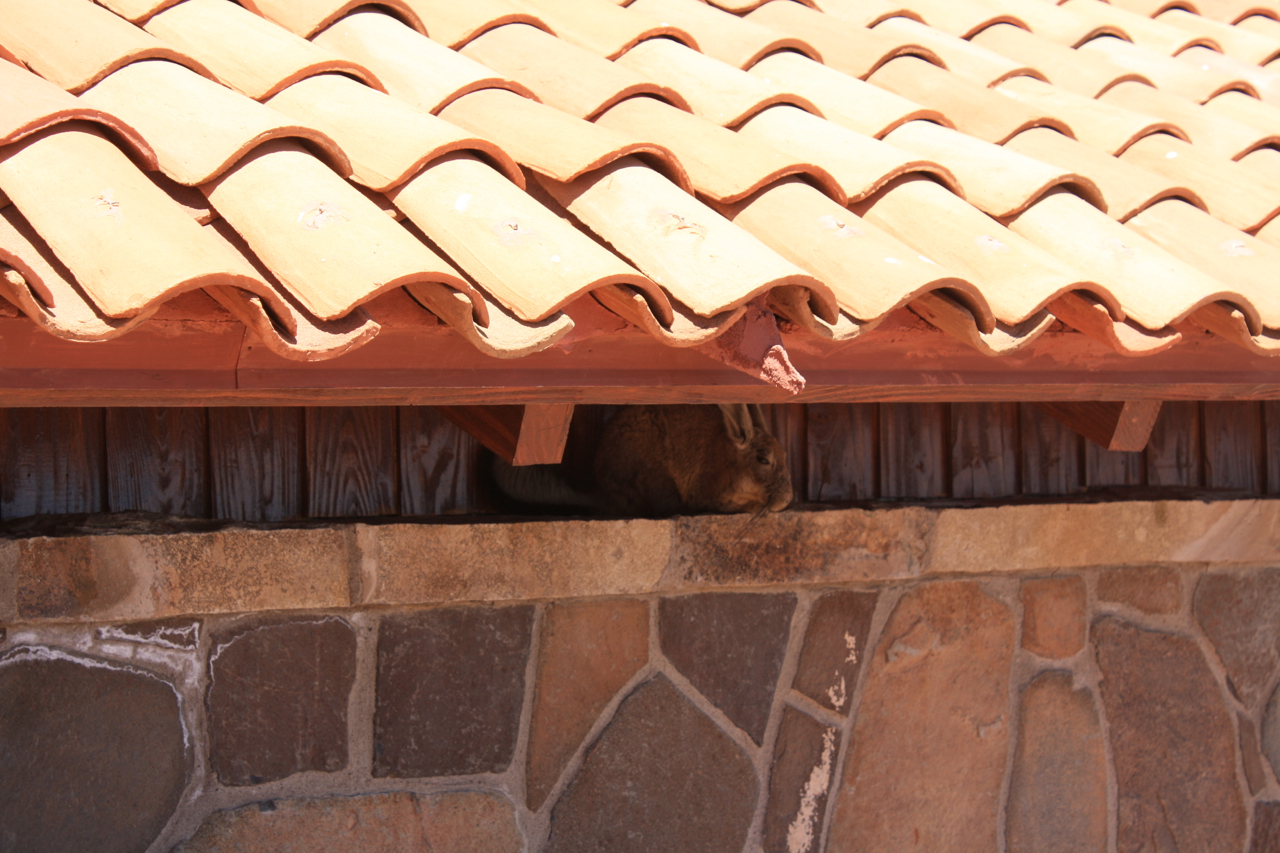
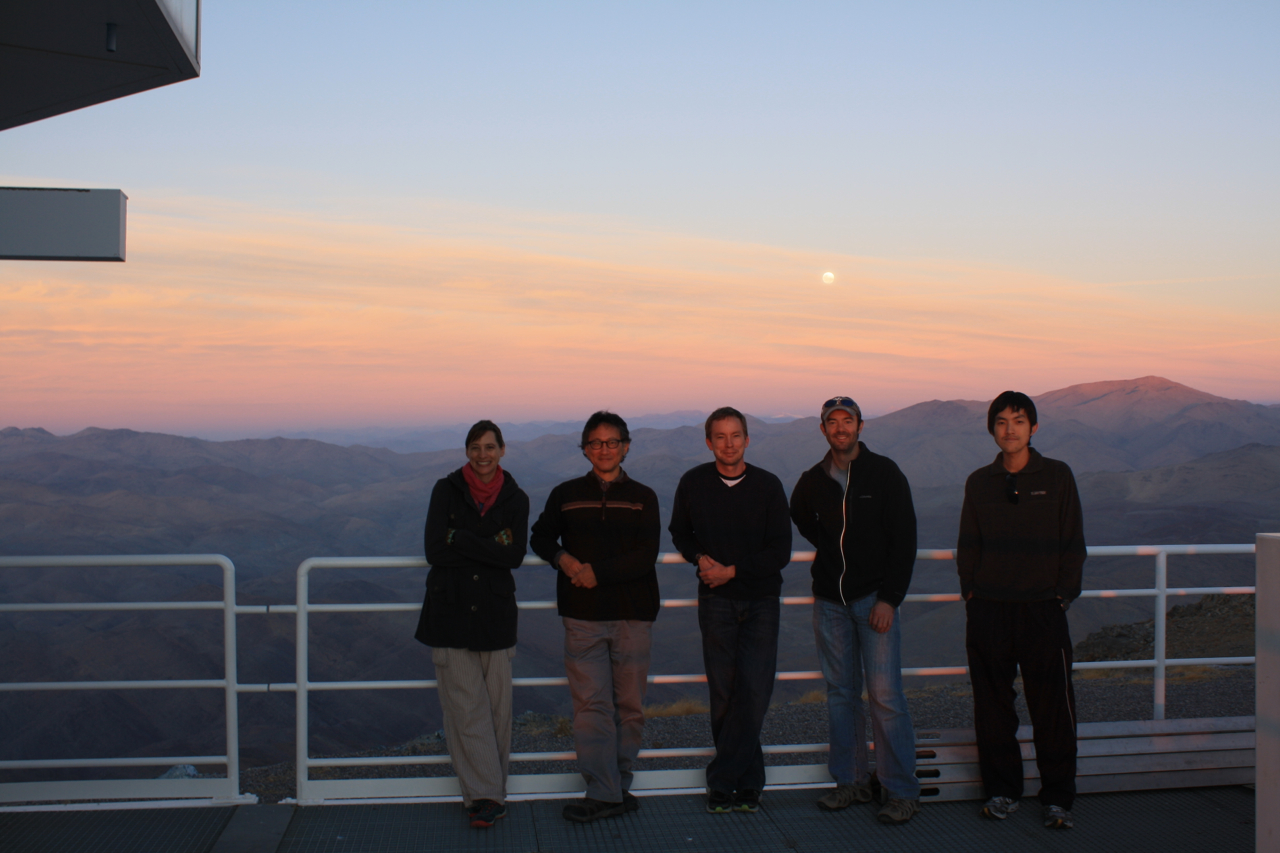
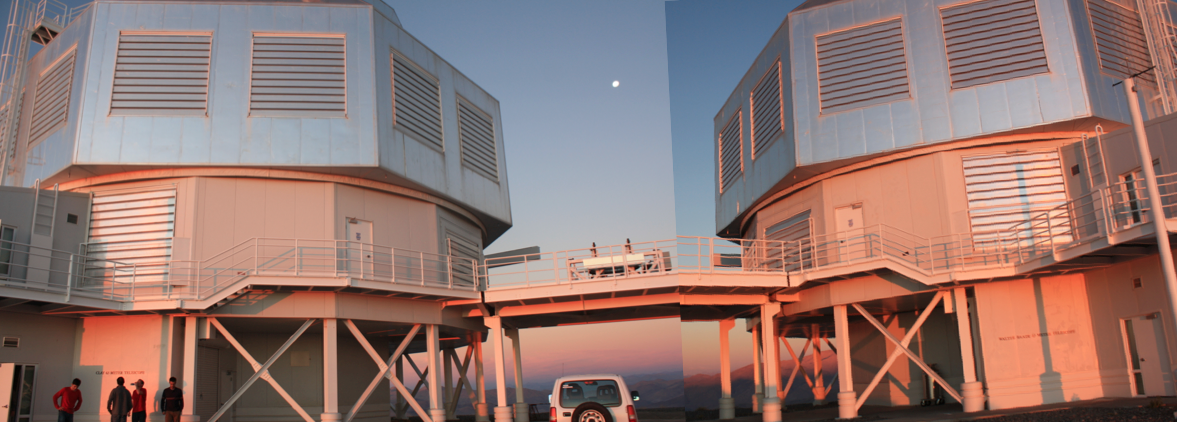
Now on to my alterior motive for posting today. I’d like to take this opportunity to answer the question, put to me directly by both my husband and my father after reading the blog, “So… it sounds like things are going great over there…. but why are YOU there again?”
It’s a fair question. What ARE all the rest of us doing? You’ll find evidence of our existence in the footnotes of previous blog posts (“so and so arrived today”) and in the backgrounds of pictures, but what are we actually doing?
No we weren’t eaten by Cart-Zilla before we could get any real work done! No, we’re not twiddling our thumbs, sleeping all day, watching movies, or leaving our husbands to fend for themselves for weeks on end for no good reason at all. We’re here for science.
I asked the newest member of the MagAO team to demonstrate:

There are a lot of practical problems to be solved before we start collecting science data, and that’s what the rest of us have been working on. We’re making sure that all of the file information that we need is written correctly and automatically when we take data, that we know how to tell the telescope where to point, that we have lots of options for good scientifically-interesting things to point at, that we understand how our instruments are performing and, perhaps most importantly, that we know how to process the data coming out of the system so that we can actually do science when the time comes. For example, a typical VisAO data set might contain 10,000 images. Processing such a large number of images at once requires some careful planning, so we’ve been busy testing different methods to try and speed up the process. So that’s what the rest of us quiet M-star types are doing here while the O and B engineering superstars are burning brightly on the blog.
Warning: I’m about to get deep here. Perhaps it will even make you forget my corny spectral type joke.
In conclusion, I’d like to take a moment to appreciate the complex mechanical, software and optical engineering that goes into a system like MagAO. Even after being involved in this project for 4 years, I’m not sure that I fully appreciated the complexity until I got here. The MagAO system has to control many components to micron precision all while the telescope is tracking, the mirror is deforming, and control programs are running on four or more separate computers. All of these pieces have to speak coherently to one another, and do so seamlessly so that we observers can do our science. Everyone knows that science is sexy, but as I’m discovering, engineering can be sexy too!
Therefore, I leave you to contemplate Cart-Zilla, an engineering marvel.


